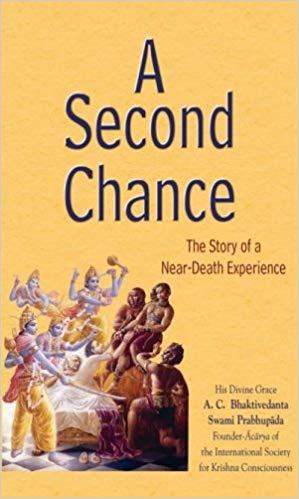Description
The Jiva Institute of Vaiśnava Studies is happy to announce the publication and availability of the fourth book in the Ṣaṭ Sandarbha series, the Kṛṣṇa Sandarbha. Here we are providing an exclusive preview of this wonderful book by making the part of the introduction available:
Notwithstanding Kṛṣṇa’s enigmatic nature, it is essential to gain a clear picture of His true ontological status in order to grasp the significance of the Bhāgavata Purāṇa and the method by which it self-discloses truth, namely, bhakti-yoga. As established in Tattva Sandarbha (Anucchedas 50–52) with reference to the Bhāgavata’s second verse (SB 1.1.2), this Purāṇa specifically propounds the supreme dharma of humanity, which is love for Bhagavān—our very source and refuge. To be infused with transcendental love for Bhagavān, authentic and unambiguous knowledge about Him and His essential being is of utmost importance. Since Bhagavān has innumerable forms, such as Viṣṇu, Rāma, Kṛṣṇa, and Nṛsiṁha, the question must be asked, are They all equiprimordial in their constitutional status or is there some hierarchy of being among Them? To address this question, Śrī Jīva Gosvāmī wrote this book, Kṛṣṇa Sandarbha.
The conventional and for the most part unexamined point of view is that Kṛṣṇa is simply an avatāraof Viṣṇu. In Kṛṣṇa Sandarbha, Śrī Jīva Gosvāmī uproots this misconception, demonstrating that Bhagavān Viṣṇu, being ontologically related to the play of creation and hence to immanence, is Himself implicitly included within a more complete transcendent Whole (avatārī), technically known as Svayaṁ Bhagavān, who is clearly identified in the text as Śrī Kṛṣṇa. Although Śrī Jīva previously delineated the ontology of Bhagavān in general terms in Bhagavat Sandarbha, he did not address the question of the identity of Svayaṁ Bhagavān Himself, or Bhagavān in His ownmost essential being, nature, and original form. In this respect, Kṛṣṇa’s status in regard to the various avatāras was not yet made a subject of inquiry. By first establishing a comprehensive universal understanding of Bhagavān in Bhagavat Sandarbha, Jīva Gosvāmī laid the foundation for a detailed investigation into the ontology of Svayaṁ Bhagavān in Kṛṣṇa Sandarbha. His fundamental conclusion in the latter volume is that Kṛṣṇa is the source of all other avatāras of Bhagavān and that He has no source other than Himself.
Jīva Gosvāmī’s primary intention in writing this book is to reveal Kṛṣṇa as the supreme object of worship and love. In the very beginning of Tattva Sandarbha, he clearly stipulated that the subject of the Six Sandarbhas is meant specifically for those whose sole aspiration is to be immersed in the bhajana of Śrī Kṛṣṇa. He even declared that the Sandarbhas should be studied only by such devotees. The present Sandarbha is surely in line with this declaration. In order for a devotee to be rightly established in such bhajana, he must have a clear understanding of the true nature of his object of worship. In Kṛṣṇa Sandarbha, Śrī Jīva Gosvāmī provides this distinct and esoteric knowledge of Kṛṣṇa, the supreme worshipable deity.
Kṛṣṇa Sandarbha is the fourth book in the series of the Six Sandarbhas. Śrī Jīva Gosvāmī wrote the first three Sandarbhas—Tattva, Bhagavat, and Paramātma—based on the Bhāgavata Purāṇa’sfamous “vadanti” verse (SB 1.2.11). In these three books, he elaborated on the key words mentioned in this verse: tattva, brahma, paramātmā, and bhagavān. While treating their own graded thematic subjects, these first three Sandarbhas ultimately serve as an introduction to the fourth volume, Kṛṣṇa Sandarbha, in which Śrī Jīva Gosvāmī ascertains the identity of the original form of Bhagavān. In doing so, he brings to light the true significance of another key phrase from the vadanti verse—namely, that ultimate reality (tattva) is nondual consciousness (advaya-jñāna). Śrī Jīva conclusively establishes that this phrase is a reference to Śrī Kṛṣṇa, the Nondual Personal Absolute replete with His own interiority.























There are no reviews yet.